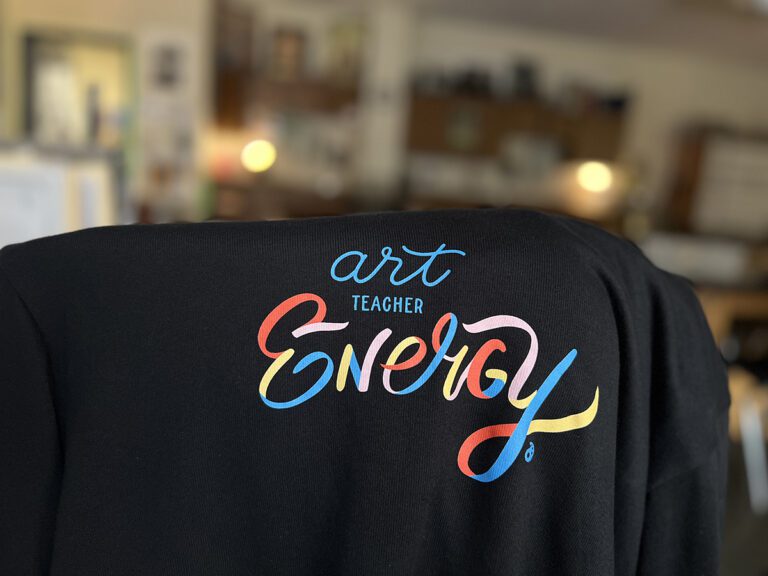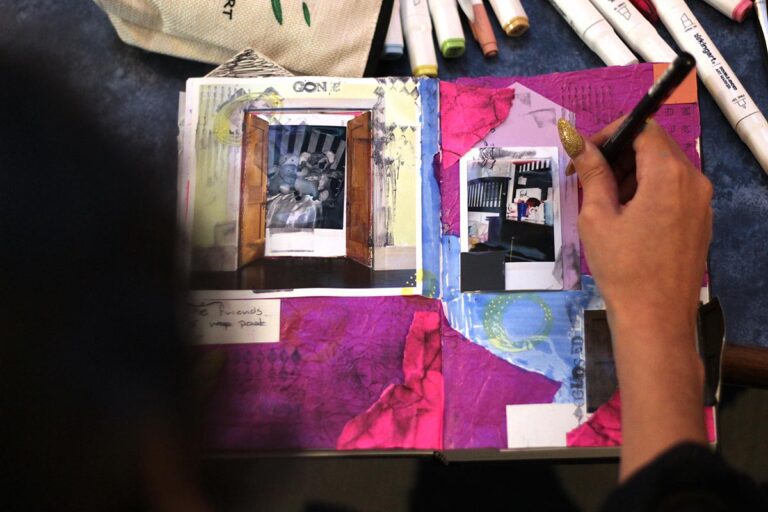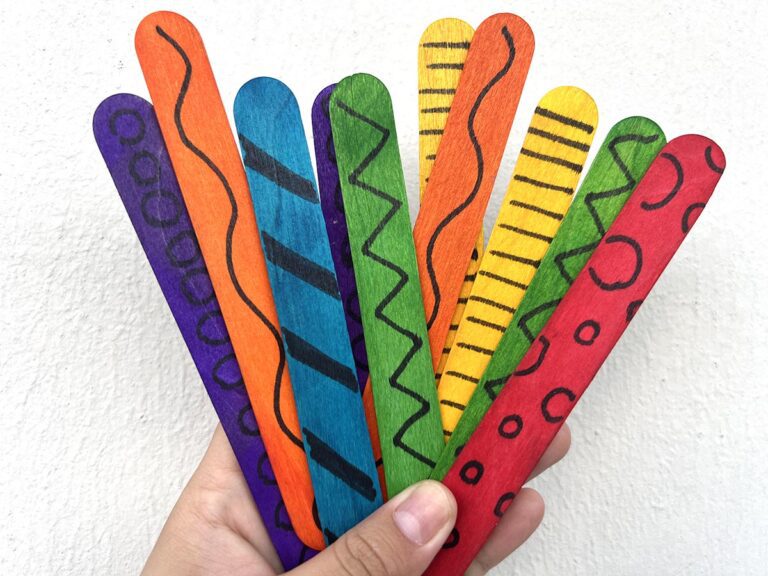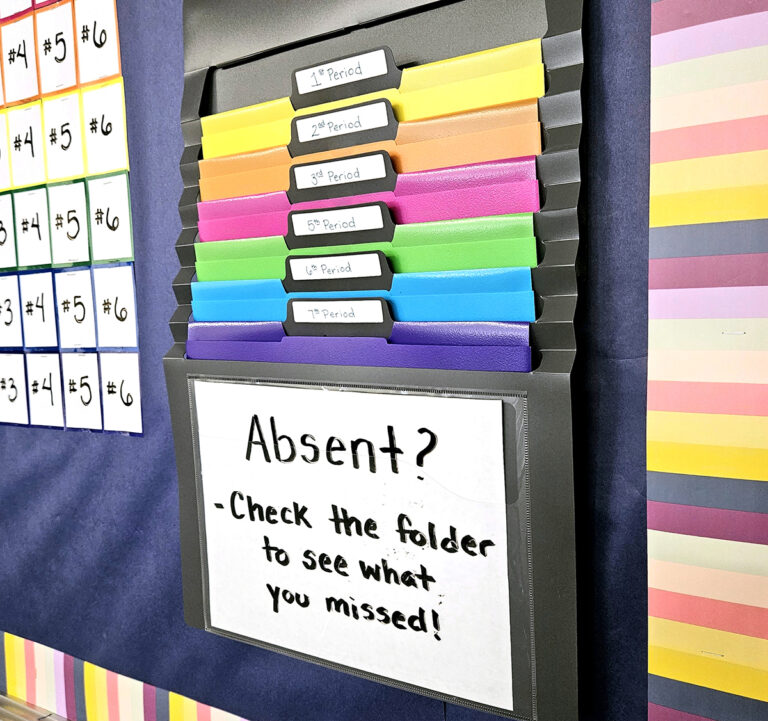Working in a Title 1 school is a unique experience. If you’re unfamiliar with the term, a Title I school means it has a certain percentage of students who are at-risk, often living at or below the poverty line. At-risk students are those “…considered to be in danger of not graduating, being promoted, or meeting other education-related goals.”
As noted in the article “Understanding the Basics of Title 1 Funds” by Sarah Malburg, “Title 1 funds aim to bridge the gap between low-income students and other students. The U.S. Department of Education provides supplemental funding to local school districts to meet the needs of at-risk and low-income students.”
Funds are used to help schools pay for staff, curriculum materials, and supplemental programs in an effort to level the playing field.
While teaching in a Title 1 school can be very rewarding, it is not always easy.
Just like any teaching position, being an art teacher in a Title 1 school can come with its own struggles and successes. For the past twelve years, I’ve taught at a Pre-K-5 Title 1 school and have had my fair share of learning experiences. I have gained a wealth of knowledge through trial and error in the classroom. What I’ve come to find is the art room is a great place for many at-risk students to express themselves and find their groove.
Like any teacher, I have good days and bad, with some being harder than others. But, one thing I know for sure is that I wouldn’t have it any other way.
Here is an open letter to all art teachers working with at-risk students.

Dear Art Teachers,
Teaching can be hard.
It’s not for the faint-hearted. This is especially true in schools with larger numbers of at-risk students where there is a unique set of challenges.
You go in every day ready to make a difference in the lives of your students, but it’s no cakewalk. Your students come to school burdened with things outside of their control. They may not have a comfortable place to sleep or good food to eat. Staying up until midnight or skipping breakfast can set the stage for a student’s entire day.
So, you must work to adapt.
Like magicians, art teachers need to have a variety of tricks up their sleeves. Through trial and error, you will find yours. Being able to come to school each day with a positive, fresh attitude is integral to your success and sanity.
That’s why classroom management and organization must be some of your top priorities.
Unlike most teachers, you have many classes, not just one. Finding what works for you and your students in terms of supply organization, portfolio storage, cleanup duties, and more is important. Don’t be afraid to teach and reteach your routines and procedures. It may get redundant, but your students need you to hold them accountable for their actions.
But, even with the best-laid plans, there will be days when you might feel invisible.
The “teacher clap” or call and response you’ve perfected might not work. Maybe once in a while, maybe never. I’ve been there. It can be a huge struggle just to get the class’s attention, and it can be so frustrating.
Try not to get discouraged. Don’t give up! Ask your colleagues what works for them, try a new phrase, or break out some musical instruments like a rain stick or a xylophone. Keep searching until you find something that sticks.
Once you find something, stay with it as long as it’s working.
Repetition and consistency are extra important for our students who may not see these qualities in their home lives. Starting and ending class the same way each time can go a long way in helping students to feel comfortable.
Most importantly, work to build strong relationships with your students.
This will be vital to your success in the classroom. Find a way to personally connect with each child who walks through your doors. Greet them with a smile each art class. Pop into the cafeteria or hallways for a surprise visit before school, after school, or during lunch. Or, simply sit down for a chat during work time in the art room.
Finding ways to relate to your students and learning about things in which they are interested can add value to your student-teacher relationship. Don’t get me wrong, you will still encounter tough days, but as you connect with your students, they will become fewer and farther between.
In short, relationships matter. Trust me. I know it has made all the difference in my classroom.
Creating an area in your room for students who are having a tough day to unwind that allows them to get their thoughts together is also helpful.
A few posters on breathing techniques or ways to solve a conflict with peers would suit such an area perfectly. You have an opportunity to help students emotionally in addition to academically, so take it! You can make a real difference in the lives of your students.
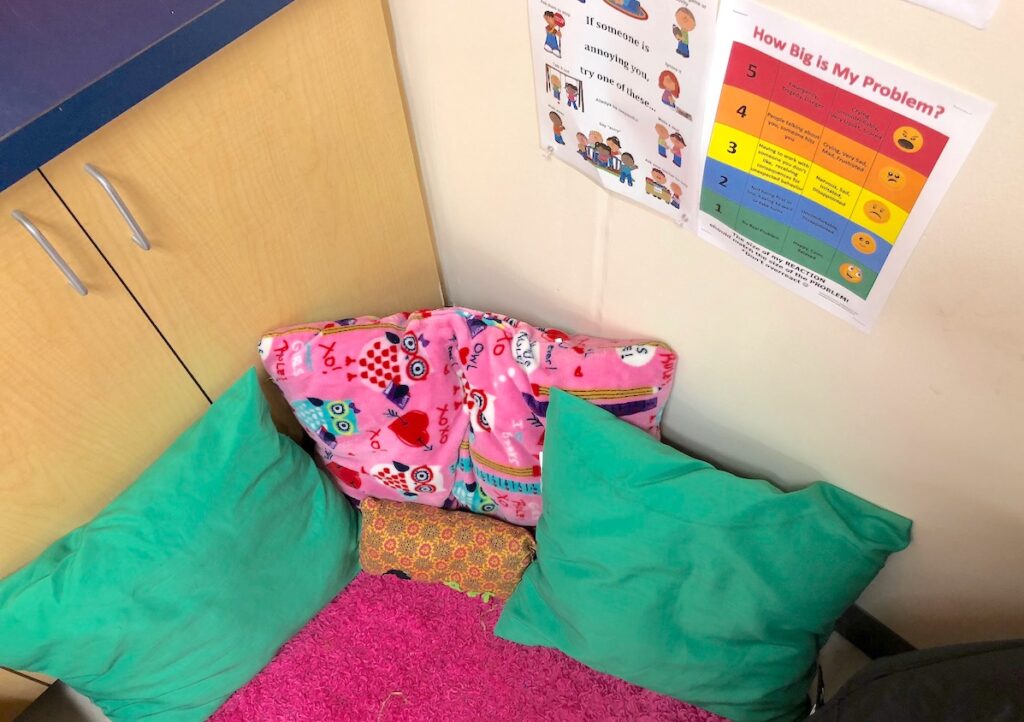
And, remember, in this situation, compassion is a necessity.
When things seem off, and rules aren’t being followed, consider sitting down for a class meeting. Restorative circles can work wonders. This technique is all about transparency. You’ll want to ask students to honestly share their thoughts and feelings so you can discuss the state of your classroom and how to make it better. Ask questions directly related to the issues you’re seeing. For example, “How can we better show respect to our peers?” or “What do we need to do to make sure we are following the classroom expectations?”
Pass around the talking stick to take turns sharing. These life skills will prove helpful in the lives of our students. Remember, art keeps many of our students coming to school. We are their “people.”
All in all, our work is never done. But don’t forget about yourself.
Try your best to take care of yourself throughout the school year. Take time to create, relax, and reflect on your practice. You can’t be the best for your students if you aren’t the best for yourself.
Remember, you may not see the direct impact on “that” kid this year or next, but you are playing a monumental role in their life.
You develop students’ creative capacity, provide a world of wonder, give them a safe haven to express themselves, and a place to find solace. This power cannot be overstated. Never forget you are doing amazing work in the lives of students everywhere.
Sincerely,
Wynita
What is your biggest struggle in the classroom? What solutions have you found to help?
What advice do you have for teachers working in Title 1 schools?
Magazine articles and podcasts are opinions of professional education contributors and do not necessarily represent the position of the Art of Education University (AOEU) or its academic offerings. Contributors use terms in the way they are most often talked about in the scope of their educational experiences.


